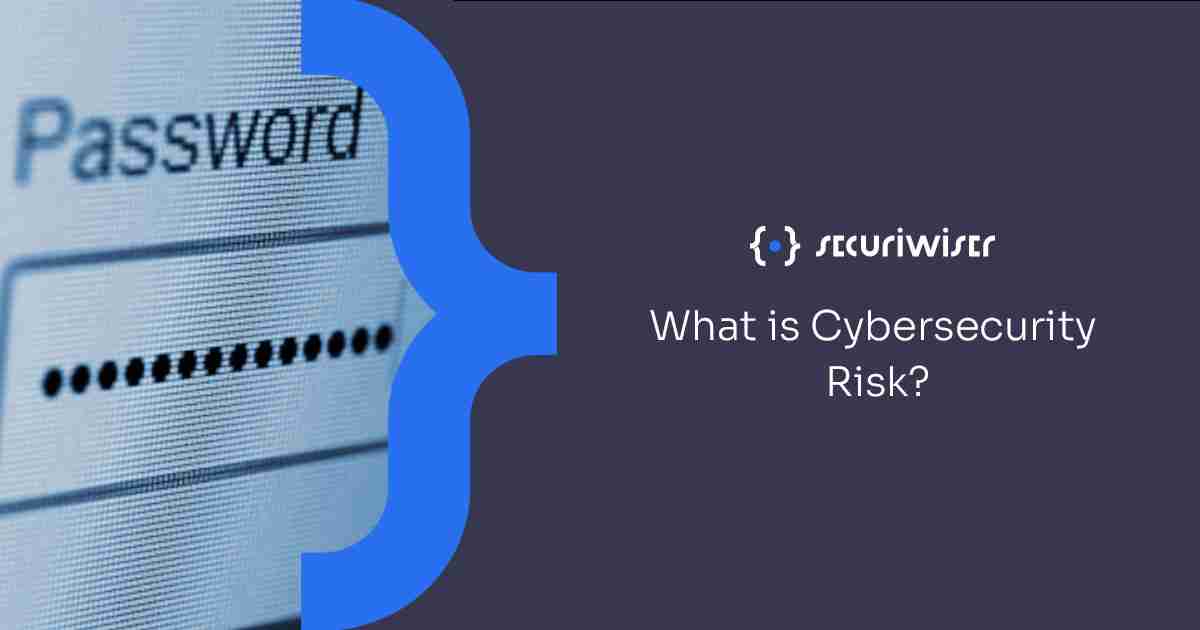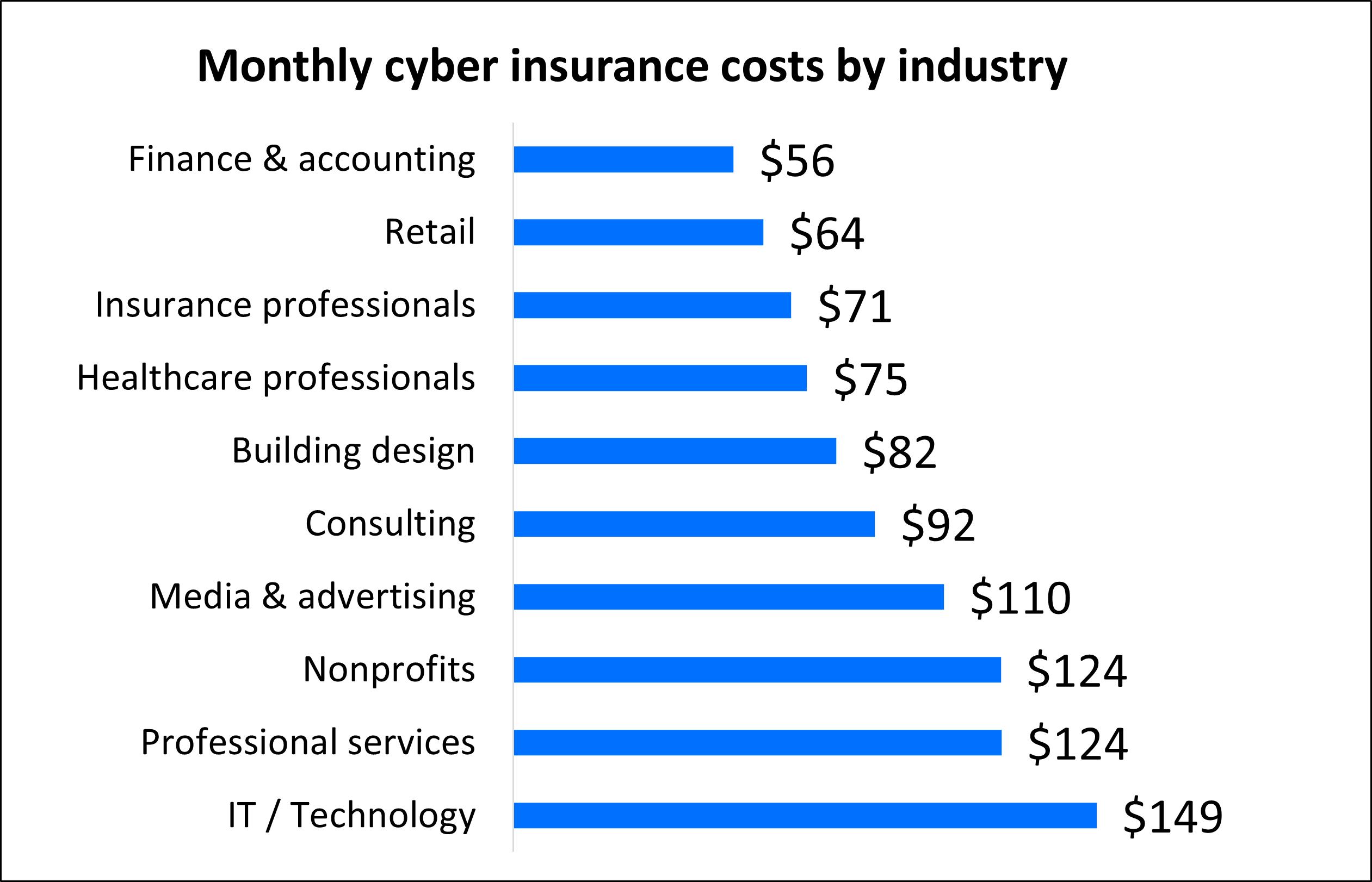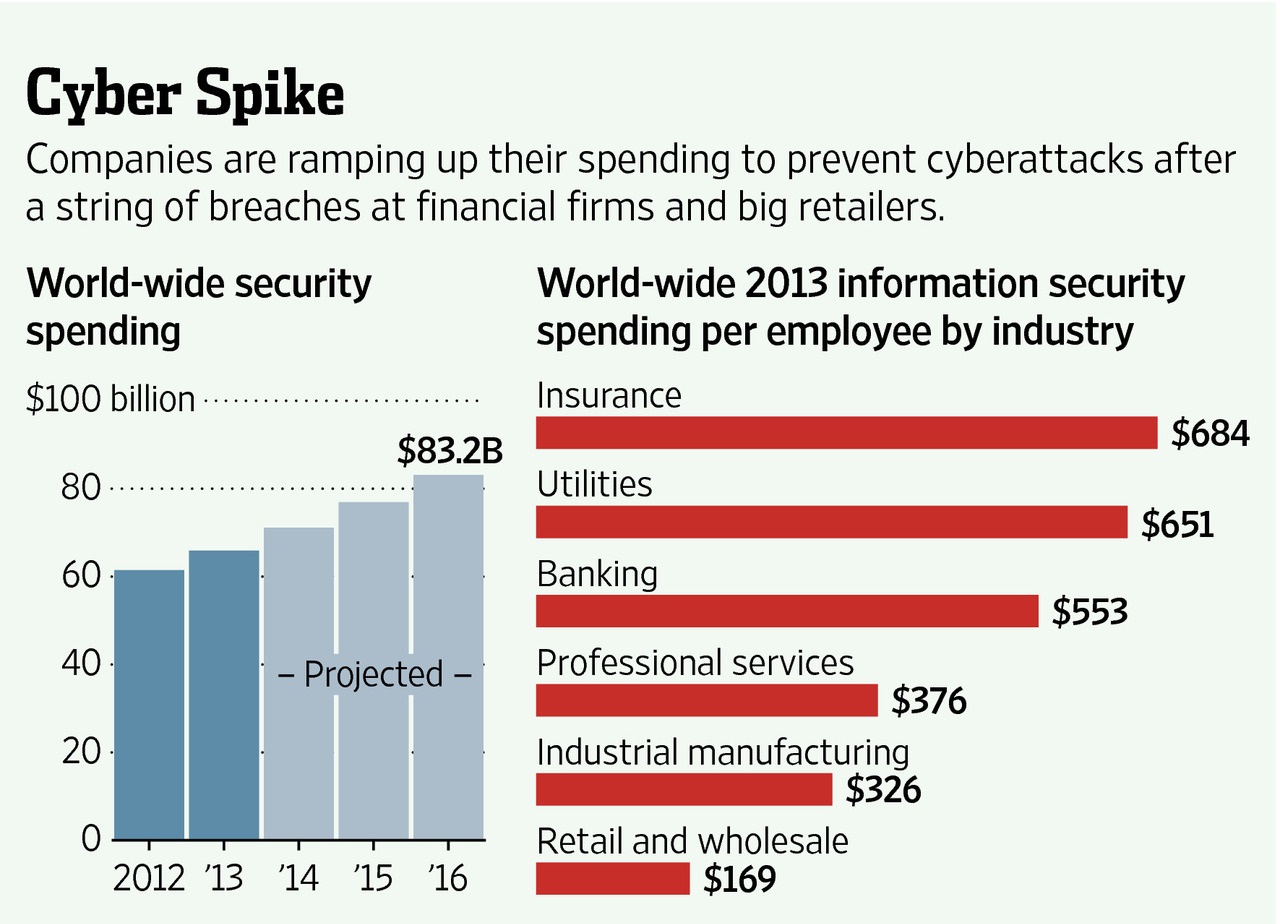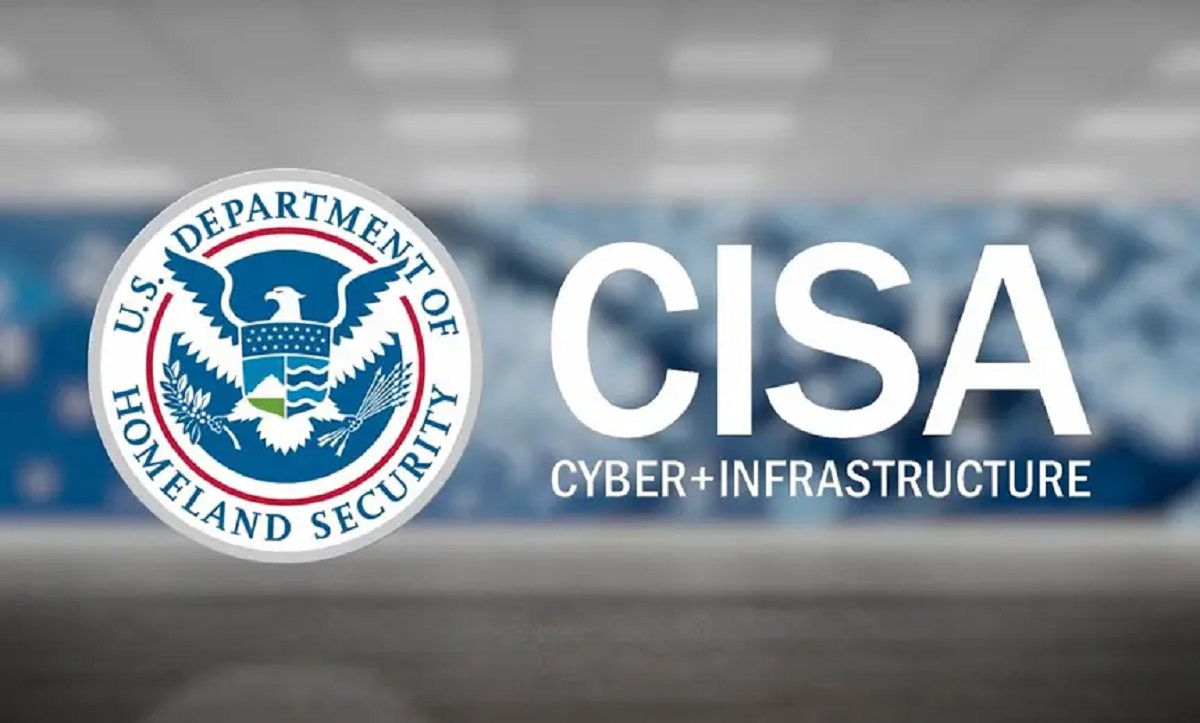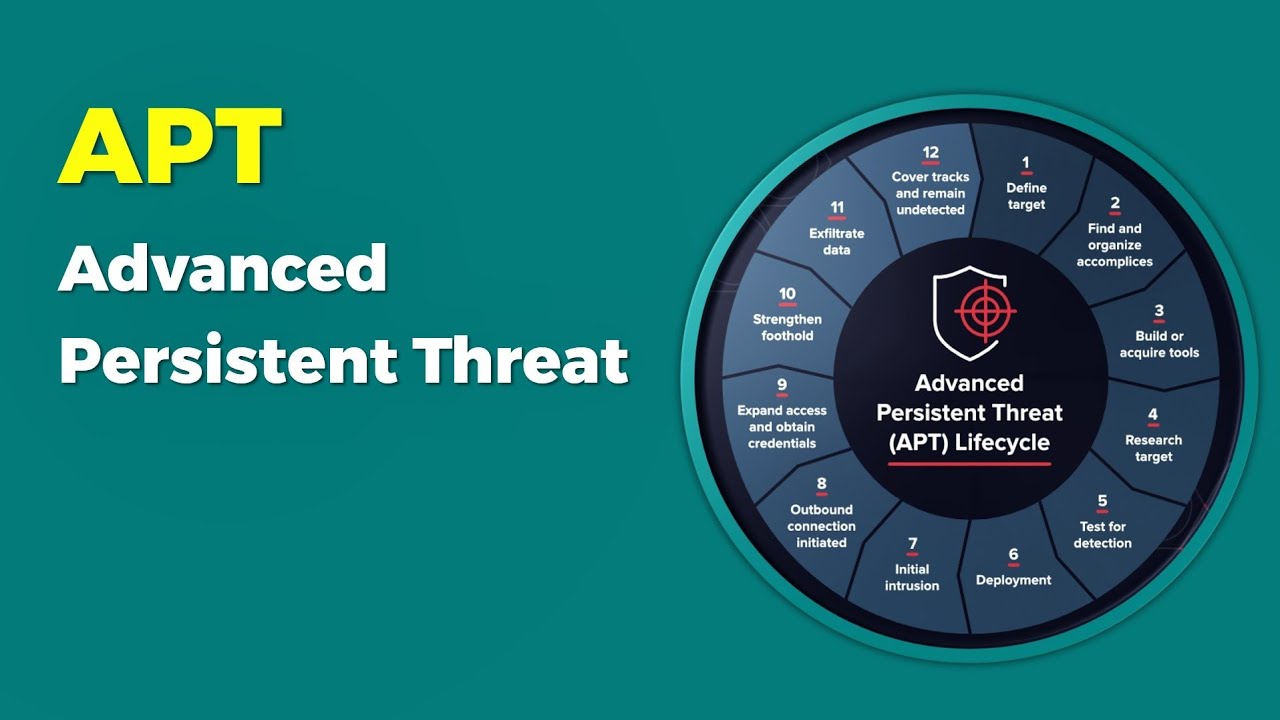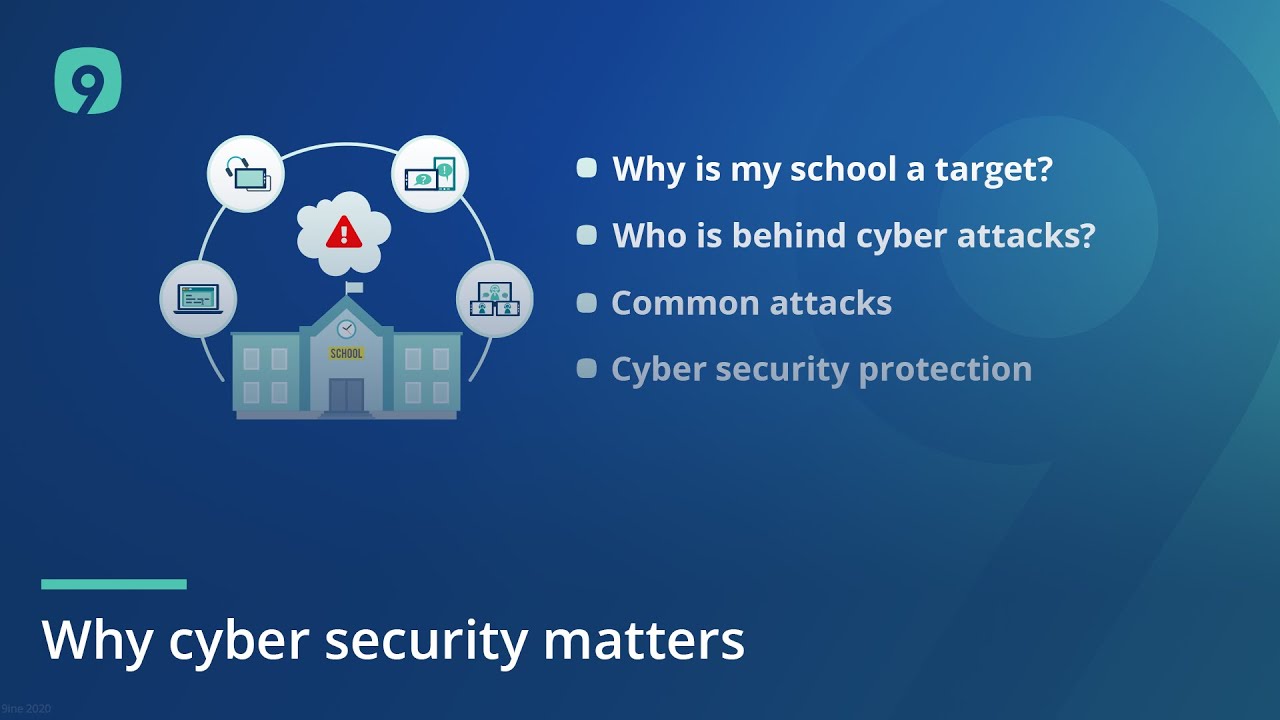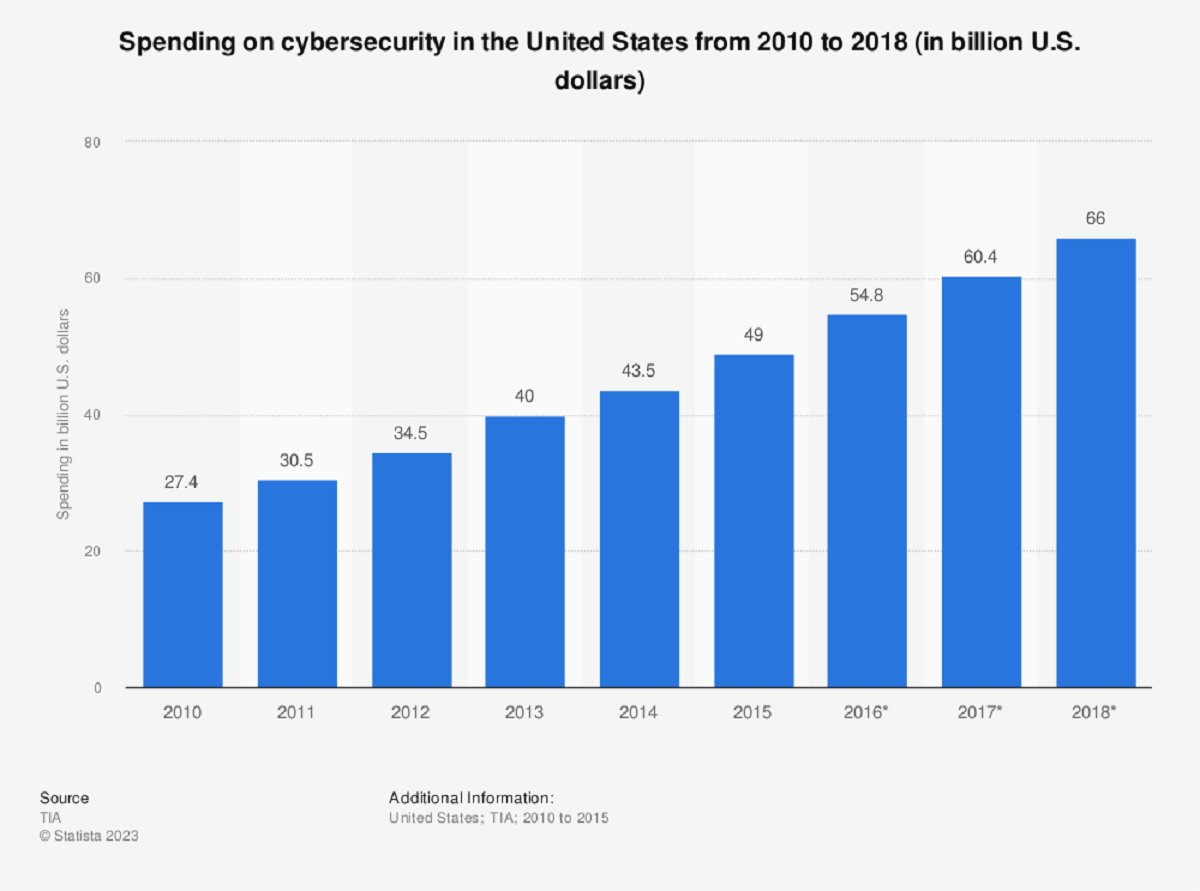Introduction
Welcome to the world of cybersecurity risk, where protecting sensitive information and digital assets is of paramount importance. In today’s interconnected and technologically advanced landscape, businesses and individuals face a relentless barrage of cyber threats that can have severe consequences. Cybersecurity risk refers to the potential for unauthorized access, disruption, or damage to computer systems, networks, and data.
With the rapid growth of digital platforms and the increasing reliance on technology, the magnitude of cybersecurity risks has escalated exponentially. Cybercriminals employ sophisticated tactics to exploit vulnerabilities and gain unauthorized access to sensitive information. Organizations and individuals must be proactive in identifying and mitigating these risks to safeguard their assets and maintain trust in the digital realm.
Cybersecurity risk comes in various forms, each posing unique challenges and potential damage. Understanding these risks is crucial in developing an effective cybersecurity strategy and response plan. In this article, we will explore the different types of cybersecurity risks and delve into their potential impact on businesses and individuals. We will also discuss ways to assess, manage, and mitigate cybersecurity risks to maintain a secure digital environment.
Definition of Cybersecurity Risk
Cybersecurity risk refers to the potential for unauthorized access, disruption, or damage to computer systems, networks, and data. It encompasses the vulnerabilities and threats that can compromise the confidentiality, integrity, and availability of digital assets. This risk arises from various factors, including technological vulnerabilities, human error, and malicious intent.
At its core, cybersecurity risk involves the likelihood of an event that could lead to adverse consequences for an organization or individual. These risks can take many forms, from external attacks by cybercriminals to internal breaches caused by negligent or malicious actions. They can result in financial losses, reputation damage, legal repercussions, and operational disruptions.
Organizations must understand the nature of cybersecurity risk to effectively protect their digital assets. This includes identifying potential vulnerabilities, assessing the likelihood of threats, and implementing appropriate safeguards. By comprehensively managing cybersecurity risk, organizations can minimize the likelihood and impact of security incidents, ensuring the confidentiality, integrity, and availability of their data and systems.
It is essential to note that cybersecurity risk is not a static concept. As technology evolves and cyber threats become more sophisticated, new risks emerge. Therefore, organizations and individuals must stay vigilant and adapt their cybersecurity measures to address evolving threats.
Types of Cybersecurity Risk
There are several types of cybersecurity risks that organizations and individuals need to be aware of. Understanding these risks is crucial in implementing effective security measures. Let’s explore the most common types of cybersecurity risks:
- Malware Attacks: Malware, short for malicious software, is designed to disrupt or gain unauthorized access to computer systems. This includes viruses, worms, Trojans, ransomware, and spyware. Malware can be transmitted through infected email attachments, malicious websites, or compromised software installations.
- Phishing Attacks: Phishing attacks involve tricking individuals into divulging sensitive information, such as passwords or credit card details, by disguising as a trustworthy entity. Phishers typically send fraudulent emails, masquerade as legitimate websites, or make phone calls to deceive victims.
- Ransomware Attacks: Ransomware is a type of malware that locks down a victim’s computer or encrypts their data. Attackers demand a ransom to restore access to the affected systems or decrypt the data. Ransomware attacks can severely impact businesses, leading to substantial financial losses and operational disruptions.
- Social Engineering Attacks: Social engineering attacks manipulate individuals to disclose sensitive information or perform actions that compromise security. This can include impersonating trusted individuals, utilizing psychological manipulation, or exploiting human vulnerabilities.
- Insider Threats: Insider threats come from within an organization and involve individuals who have authorized access to sensitive data. These threats can be accidental, such as employees unknowingly leaking information, or intentional, where employees maliciously misuse or steal data.
- Denial of Service (DoS) Attacks: DoS attacks aim to disrupt the availability of computer systems or networks by overwhelming them with a flood of illegitimate requests. This prevents legitimate users from accessing the services and can result in financial losses and reputational damage.
- Data Breaches: Data breaches involve the unauthorized access, acquisition, or disclosure of sensitive information. They can be caused by external attackers or internal actors and can lead to significant financial and reputational damage to businesses and individuals.
It is important to note that these types of cybersecurity risks are not mutually exclusive, and organizations must implement a comprehensive cybersecurity strategy to address multiple threats simultaneously.
Malware Attacks
Malware attacks are one of the most prevalent and damaging cybersecurity risks faced by organizations and individuals. Malware, short for malicious software, refers to a variety of harmful programs designed to infiltrate computer systems, disrupt operations, or steal sensitive data.
Malware can take many forms, including viruses, worms, Trojans, ransomware, and spyware. These malicious programs are typically disguised as legitimate software or transmitted via infected email attachments, malicious websites, or compromised software installations.
Once a computer or network is infected with malware, it can cause a range of devastating consequences. Viruses, for example, can replicate themselves and spread throughout a system, corrupting files and software. Worms can self-replicate and spread across networks, consuming bandwidth and causing system slowdowns or crashes.
Ransomware attacks have gained significant notoriety in recent years. This form of malware encrypts a victim’s data, rendering it unusable until a ransom is paid to the attackers. Ransomware attacks can have severe financial and operational implications, as businesses may be forced to pay a hefty sum or suffer from prolonged system downtime.
Spyware is another common type of malware that silently monitors and collects information from an infected system. This data can include keystrokes, passwords, browsing habits, and sensitive business or personal information. The stolen information may be used for identity theft, financial fraud, or sold on the black market.
Protecting against malware attacks requires a multi-layered approach. This includes implementing robust antivirus and anti-malware programs, regularly updating software and operating systems to patch vulnerabilities, exercising caution when clicking on links or downloading attachments, and educating users about safe computing practices.
Organizations should also establish backup and recovery mechanisms to minimize the impact of malware attacks. Regularly backing up critical data and storing it in secure off-site locations allows for the restoration of important information in the event of an attack.
Ultimately, defending against malware attacks involves continuous vigilance, proactive measures, and a well-rounded cybersecurity strategy.
Phishing Attacks
Phishing attacks are a common and deceptive form of cyber threat that targets individuals and organizations. In a phishing attack, cybercriminals masquerade as trustworthy entities to trick victims into providing sensitive information, such as passwords, credit card numbers, or banking details.
Phishers employ various techniques to carry out their attacks. They often send fraudulent emails that appear to be from reputable organizations, such as banks, social media platforms, or online retailers. These emails typically contain urgent or enticing messages, urging recipients to click on a link or provide personal information.
When victims click on the provided link, they are directed to a fake website that closely resembles the legitimate one. The purpose of this website is to capture the victim’s confidential information, which is then used for fraudulent activities or sold on the dark web.
Phishing attacks can also be carried out through phone calls (vishing) or text messages (smishing), where the attackers pretend to be representatives of trusted organizations and try to extract sensitive information from their targets.
The impact of phishing attacks can be devastating. Individuals may find their identities stolen, bank accounts compromised, or personal information misused. For organizations, falling victim to a phishing attack can result in data breaches, financial losses, damage to customer trust, and potential legal liabilities.
To protect against phishing attacks, individuals and organizations should exercise caution and adopt security measures. Avoid clicking on suspicious links in emails or text messages, especially when the sender requests personal information. Instead, manually enter the website address of the organization into the browser to ensure authenticity.
Verifying the legitimacy of emails or phone calls by contacting the organization directly is another crucial step in preventing phishing attacks. Be cautious of unsolicited communications and be wary of sharing personal or sensitive information without proper verification.
Education and awareness are essential in combating phishing attacks. Organizations should provide cybersecurity training to employees, teaching them how to identify phishing attempts and emphasizing the importance of maintaining strong password hygiene.
Implementing robust email filters and spam detection mechanisms can also help identify and block suspicious messages. Additionally, utilizing multi-factor authentication and regularly updating software and security patches can further strengthen defenses against phishing attacks.
By maintaining a vigilant and proactive approach, individuals and organizations can significantly reduce the risk of falling victim to phishing attacks.
Ransomware Attacks
Ransomware attacks have emerged as a grave cybersecurity threat, causing significant financial losses and operational disruptions for organizations and individuals. Ransomware is a type of malware that encrypts a victim’s data and holds it hostage until a ransom is paid.
Ransomware attacks typically begin with a user unknowingly downloading an infected file or clicking on a malicious link. Once the ransomware gains access to a system, it quickly encrypts files, making them inaccessible to the victim. The attacker then demands payment, often in the form of cryptocurrency, in exchange for the decryption key needed to restore the data.
The consequences of ransomware attacks can be severe. For individuals, losing personal data can be emotionally distressing, while for businesses, the impact can be devastating. Ransomware attacks can lead to significant financial losses as organizations face the dilemma of whether to pay the ransom or invest additional resources in restoring their systems and recovering their data.
Ransomware attacks also result in operational disruptions, as businesses may experience prolonged downtime, loss of productivity, and damage to their reputation. Additionally, organizations that store sensitive customer data may face legal and regulatory consequences if they are unable to protect that data from ransomware attacks.
Preventing ransomware attacks requires a multi-pronged approach. Keeping systems and software up to date with the latest security patches is crucial, as attackers often exploit known vulnerabilities. Regularly backing up important data and storing it offline or in secure off-site locations is essential for recovery in the event of an attack.
Employee education is paramount in preventing ransomware attacks. Training staff on best practices, such as avoiding suspicious email attachments, verifying the authenticity of links before clicking, and being cautious of social engineering tactics, can greatly reduce the risk of infection.
Implementing robust antivirus software, firewalls, and intrusion detection systems can provide an additional layer of protection against ransomware attacks. Network segmentation can also limit the spread of ransomware within an organization’s infrastructure, mitigating the potential impact.
Having a comprehensive incident response plan is crucial for effective handling of ransomware attacks. This includes isolating infected systems, notifying appropriate authorities, and working with cybersecurity experts to mitigate the attack and recover encrypted data.
Ransomware attacks are an ever-evolving threat. Staying informed about the latest attack methods and trends is essential for maintaining effective defenses against this type of cyber threat.
Social Engineering Attacks
Social engineering attacks are a form of cyber threat that manipulates individuals into divulging sensitive information or performing actions that compromise security. Unlike other cyber attacks that exploit technical vulnerabilities, social engineering attacks exploit human psychology and emotions to deceive and trick victims.
These attacks can take various forms and often involve impersonating trusted individuals, such as colleagues, superiors, or IT support staff. Attackers use manipulation techniques to gain the victim’s trust and convince them to disclose confidential information or provide access to systems and data.
One common example of a social engineering attack is a phishing scam. Phishers send fraudulent emails that resemble legitimate communications from reputable organizations. These emails often include urgent requests for personal information or prompt the recipient to click on a malicious link.
Another form of social engineering attack is pretexting, where an attacker creates a false scenario or persona to manipulate the victim into sharing sensitive information. This could involve impersonating a customer, vendor, or employee to gain access to confidential data or financial resources.
Preventing social engineering attacks requires a combination of cybersecurity measures, employee awareness, and robust policies. Educating individuals about the tactics used in social engineering attacks can empower them to recognize and respond appropriately to suspicious requests.
Organizations should establish clear procedures for handling requests for sensitive information, such as requiring verification through secure channels or protocols. Employees should be encouraged to verify the authenticity of requests, even if they appear to come from trusted sources, before sharing any confidential information.
Implementing strong access controls and multi-factor authentication can also help protect against social engineering attacks. By requiring additional verification measures, such as a unique code or biometric authentication, the risk of unauthorized access due to social engineering can be significantly reduced.
Regular cybersecurity training and awareness programs can play a vital role in preventing social engineering attacks. These programs should provide employees with practical examples of social engineering tactics and the tools to identify and report suspicious activity.
It is important to foster a culture of vigilance and encourage open communication within organizations. Employees should feel comfortable reporting any suspicious requests or incidents promptly so that appropriate actions can be taken to mitigate potential risks.
Combating social engineering attacks requires a collaborative effort between individuals, organizations, and technology. By staying informed, adopting safe practices, and maintaining a proactive attitude towards cybersecurity, the risk of falling victim to social engineering attacks can be significantly reduced.
Insider Threats
Insider threats refer to cybersecurity risks that arise from individuals within an organization who have authorized access to sensitive information and systems. These threats can come from employees, contractors, or anyone with insider knowledge. While most employees act in the best interest of their organizations, there are cases where individuals may intentionally or unintentionally misuse their access privileges, leading to significant harm.
Insider threats can take several forms. One type is accidental, where employees unintentionally leak sensitive information or fall victim to social engineering attacks. For example, an employee may inadvertently send a sensitive email to the wrong recipient or unknowingly click on a phishing link that grants access to company systems.
However, malicious insider threats pose a more significant risk. These individuals deliberately misuse their authorized access for personal gain, sabotage, or intellectual property theft. The motivations behind these actions can range from financial gain, personal vendettas, or even acts of corporate espionage.
Insider threats can have severe consequences for organizations. They may result in data breaches, financial losses, reputational damage, and legal liabilities. If sensitive information is leaked or stolen, it can impact customer trust, partnerships, and competitive advantage.
To mitigate insider threats, organizations should implement several preventive measures. Implementing strict access controls and least privilege principles ensures that employees only have access to the information necessary for their job role. Regular access reviews and audits can help identify any potential unauthorized access or policy violations.
Security awareness training is also crucial in preventing both accidental and malicious insider threats. Employees should be educated on the importance of protecting sensitive information, recognizing social engineering tactics, and understanding their role in maintaining a secure computing environment.
Monitoring and logging systems are essential in detecting suspicious activities. By implementing robust monitoring mechanisms, organizations can identify unusual behavior patterns or unauthorized access attempts, allowing for timely intervention.
Establishing a culture of trust and open communication within the organization can encourage employees to report any suspicious activities or concerns they may have. Reporting channels, such as an anonymous hotline, can be valuable resources for employees who wish to share information without fear of retaliation.
Lastly, conducting thorough background checks and screening processes during the hiring process can help identify individuals with a history of malicious intent or past security incidents. Regular employee evaluations and performance reviews can also provide insights into any potential indicators of insider threat risks.
By implementing a comprehensive insider threat program that includes preventive measures, detection capabilities, and a strong company culture focused on cybersecurity, organizations can significantly reduce the likelihood and impact of insider threats.
Denial of Service (DoS) Attacks
Denial of Service (DoS) attacks are a type of cyber threat that aims to disrupt the availability of computer systems or networks, rendering them inaccessible to legitimate users. In a DoS attack, the attacker overwhelms a target system with a flood of illegitimate requests or by exploiting vulnerabilities to exhaust system resources.
One common type of DoS attack is the “flood attack,” where the attacker floods a targeted network with a high volume of data, overwhelming its capacity to process legitimate requests. This results in a slowdown or complete interruption of the network, denying access to genuine users.
Another variant of DoS attacks is the Distributed Denial of Service (DDoS) attack, which involves multiple attackers simultaneously targeting a network or system. In a DDoS attack, the attackers use a botnet—a network of compromised computers—to amplify the volume of traffic directed at the target, making it even more difficult to mitigate the attack.
DoS attacks can have severe consequences for organizations. By disrupting the availability of critical systems and services, businesses may experience financial losses, reputational damage, and customer dissatisfaction. Industries that rely heavily on uninterrupted online operations, such as e-commerce, banking, or healthcare, are particularly vulnerable to the impact of DoS attacks.
To protect against DoS attacks, organizations can implement several measures. One approach is to deploy firewalls, intrusion detection systems, and load balancers to monitor and filter incoming network traffic, identifying and blocking malicious requests.
Utilizing Content Delivery Networks (CDNs) can also help distribute traffic and mitigate the impact of DoS attacks by redirecting requests to diverse network servers. Additionally, organizations can invest in scalable infrastructure and bandwidth capacity to better withstand increased traffic during an attack.
Implementing rate limiting mechanisms can prevent the overwhelming of resources and restrict the number of requests from a single IP address or user, lowering the risk of DoS attacks.
Regular vulnerability assessments and penetration testing can help identify weak points in a network or system that attackers could exploit to carry out DoS attacks. By patching and updating software, organizations can address known vulnerabilities and reduce the likelihood of successful attacks.
Lastly, having an incident response plan specific to DoS attacks is vital. This plan should include protocols for detecting, containing, and mitigating DoS attacks promptly, as well as communication and recovery strategies to minimize the impact of such attacks.
Preparation, monitoring, and timely response are key factors in effectively mitigating the impact of DoS attacks and ensuring uninterrupted access to critical systems and services.
Data Breaches
Data breaches are among the most concerning cybersecurity risks faced by organizations and individuals. A data breach occurs when unauthorized individuals gain access to sensitive or confidential information, potentially leading to its exposure, theft, or misuse.
Data breaches can occur through various means, including cyberattacks, insider threats, or accidental exposures. Cybercriminals may exploit vulnerabilities in computer systems, social engineering tactics, or inadequate security measures to gain unauthorized access to databases, networks, or cloud storage.
When a data breach occurs, the consequences can be severe and far-reaching. The compromised data may include personal identifiable information (PII), financial records, health records, or intellectual property. The impact can extend beyond immediate financial losses, with potential long-term damage to reputation, customer trust, and legal liabilities.
Organizations should implement a multi-layered approach to protect against data breaches. This includes comprehensive cybersecurity measures, such as strong access controls, encryption, regular security audits, and advanced threat detection systems.
Regularly patching and updating software and systems is crucial in addressing vulnerabilities and mitigating the risk of data breaches. Additionally, implementing secure backup and disaster recovery mechanisms can facilitate the restoration of data in the event of a breach.
Employee training and awareness play a critical role in preventing data breaches. Properly educating staff about secure data handling practices, password hygiene, and the importance of data privacy can minimize the risk of accidental exposures or falling victim to social engineering attacks.
Monitoring and auditing network activity can help detect and respond promptly to unauthorized access attempts or suspicious behavior. Implementing intrusion detection systems, firewalls, and behavior analytics can provide real-time alerts for potential breaches.
In the event of a data breach, organizations must have a well-defined incident response plan that outlines the steps to be taken. This includes containing the breach, notifying affected individuals, cooperating with law enforcement or regulatory authorities, and implementing remediation measures to prevent future breaches.
Compliance with relevant regulations and industry standards is paramount in preventing data breaches. Organizations should stay informed about legal requirements and best practices for data protection and implement appropriate security controls to ensure compliance.
Data breaches can have significant consequences for individuals as well. Individuals should be cautious about sharing their personal information, use strong and unique passwords, and regularly monitor their accounts for any suspicious activities or signs of potential breaches.
By prioritizing data protection, implementing robust security measures, fostering a security-conscious culture, and actively monitoring for potential breaches, organizations and individuals can mitigate the risks associated with data breaches and protect sensitive information.
Impact of Cybersecurity Risk
Cybersecurity risks have far-reaching implications for individuals, businesses, and society as a whole. The consequences of not adequately addressing these risks can be severe, affecting financial stability, reputation, legal standing, and operational continuity.
1. Financial Losses: One of the most significant impacts of cybersecurity risks is the potential for financial losses. Organizations can face direct costs associated with data breaches, such as incident response, forensic investigations, legal fees, and customer compensation. Indirect costs can also arise from reputational damage, loss of business opportunities, and the need to invest in enhanced security measures to prevent future incidents.
2. Reputation Damage: Cybersecurity incidents can result in a loss of trust and reputational damage. When customer data is compromised or systems are disrupted, businesses may face a decline in customer confidence and loyalty. Negative publicity, social media backlash, and customer churn can all contribute to lasting damage to a brand’s reputation.
3. Legal and Regulatory Consequences: Cybersecurity incidents can have legal and regulatory implications, particularly when organizations fail to adequately protect sensitive information. Organizations may face penalties, fines, and legal action from affected individuals, regulatory bodies, or business partners for non-compliance with data protection regulations. Compliance requirements continue to evolve, highlighting the need for organizations to stay up-to-date with relevant laws and regulations.
4. Operational Disruptions: Cybersecurity incidents, such as successful cyberattacks or system breaches, can disrupt normal business operations. This can result in significant downtime, reduced productivity, and temporary or permanent loss of critical services. Operational disruptions can have cascading effects, impacting supply chains, causing delays, and resulting in financial losses for organizations and potentially affecting customers or clients.
Addressing the impact of cybersecurity risks requires a comprehensive approach that includes implementing effective security measures, educating employees, and developing incident response plans. Investing in robust cybersecurity strategies and technologies can help mitigate potential risks and reduce the impact of cyber threats.
Moreover, organizations should proactively engage in risk assessments to identify vulnerabilities, assess the potential impact of specific threats, and prioritize resources to address the most critical risks. By continuously monitoring and updating security measures, organizations can adapt to emerging threats and ensure the resilience of their systems and data.
Individuals also play a crucial role in managing the impact of cybersecurity risks. Practicing good cyber hygiene, such as using strong passwords, being cautious of suspicious emails or links, and keeping software and devices up to date, can minimize the risk of falling victim to cyber threats.
Overall, a proactive and holistic approach to cybersecurity risk management is essential in minimizing the impact on financial stability, reputation, legal compliance, and operational continuity.
Financial Losses
Cybersecurity incidents can have significant financial impacts on organizations, resulting in direct and indirect costs that can be detrimental to their bottom line. The financial losses incurred can stem from various aspects of a cyber attack or data breach.
Direct costs associated with cybersecurity incidents include expenses related to incident response and recovery efforts. Organizations may need to hire cybersecurity experts, conduct forensic investigations, and implement measures to contain the breach and prevent further damage. These costs can quickly escalate, especially in large-scale breaches that require extensive remediation efforts.
Legal fees and potential fines are another factor contributing to financial losses. Organizations that fail to protect sensitive information in accordance with data protection regulations may face penalties from regulatory bodies. Class-action lawsuits and legal settlements with affected individuals can further increase the financial burden.
Moreover, organizations may incur costs related to customer compensation and identity theft services in the aftermath of a data breach. Providing credit monitoring services or taking necessary measures to support affected individuals can place a significant strain on financial resources.
Indirect costs are equally important and can have a lasting impact on an organization’s financial stability. One of the most critical indirect costs is reputational damage. When customer data is compromised or operations are disrupted, a loss of trust occurs, which can result in decreased customer loyalty, a decline in sales, and negative word-of-mouth. Rebuilding a damaged reputation can be a lengthy and costly process.
Loss of business opportunities is another potential financial impact. If a breach becomes publicly known or if a company’s reputation is tarnished, potential clients or partners may be hesitant to engage in business relationships. This loss of business can directly affect revenue streams and growth prospects.
Organizations may also need to invest in increased cybersecurity measures following a breach to prevent future incidents, mitigation, or risk reduction. This can involve upgrading security infrastructure, implementing stricter access controls, and training employees on cybersecurity best practices. While these investments are necessary, they can place a significant strain on budgets.
In order to mitigate financial losses, organizations should prioritize cybersecurity as a core part of their strategic planning and budgeting processes. Allocating sufficient resources to cybersecurity measures, such as robust security systems, regular vulnerability assessments, and employee training, can help prevent or minimize the impact of cyber incidents.
It is also important for organizations to have cyber insurance coverage to provide financial protection in the event of a breach or cyber incident. Cyber insurance can help offset the costs associated with incident response, legal fees, and potential financial liabilities.
Ultimately, organizations need to take a proactive approach to cybersecurity and view it as a long-term investment. By allocating resources, implementing strong security measures, and staying vigilant, organizations can mitigate the risk of financial losses resulting from cyber incidents.
Reputation Damage
Reputation damage is a significant consequence of cybersecurity incidents and can have long-lasting effects on organizations. When customer data is compromised, or a company experiences a cyber attack, it erodes trust and can severely tarnish its reputation.
One of the primary impacts of a cybersecurity incident on reputation is the loss of customer trust. When sensitive information is exposed or stolen, individuals feel violated and become wary of doing business with the affected organization. This loss of trust can lead to a decline in customer loyalty, a decrease in sales, and a negative perception of the company’s commitment to protecting confidential information.
Furthermore, news of a security breach can spread quickly, especially through social media and news outlets, further amplifying the reputational damage. Negative publicity and headlines highlighting the organization’s failure to safeguard customer data can have a lasting impact on public perception and may result in customers actively avoiding the organization’s products or services.
Rebuilding a damaged reputation requires significant effort and resources. Organizations need to promptly respond to the breach, communicate transparently with affected individuals, and outline the steps being taken to address the issue. Taking responsibility and demonstrating a commitment to improving security measures can help regain trust and mitigate the reputational impact to some extent.
However, the road to rebuilding reputation is not easy. It requires consistent and transparent communication, providing regular updates to stakeholders, and ensuring that the necessary steps have been taken to prevent future incidents. Organizations may also need to invest in public relations and marketing initiatives to rebuild confidence and credibility in the marketplace.
Reputation damage goes beyond customer perception. It can also affect relationships with business partners, suppliers, and investors. Partnerships and contracts may be endangered, and potential investors may question the organization’s ability to manage and protect sensitive information. These consequences can hinder business growth and opportunities for collaboration or investment.
Taking a proactive approach to cybersecurity is vital to mitigating reputation damage. By implementing strong cybersecurity measures, organizations demonstrate their commitment to protecting customer data and fostering a secure environment for their stakeholders. Regular training and education for employees can also minimize the risk of human error, which is often a contributing factor to cybersecurity incidents.
Ultimately, organizations need to prioritize reputation management as part of their cybersecurity strategy. Alongside the technical safeguards, they must have a comprehensive plan to respond to incidents effectively, communicate transparently, and rebuild trust. By placing a strong focus on reputation preservation, organizations can weather the storm of a cybersecurity incident and emerge stronger.
Legal and Regulatory Consequences
Cybersecurity incidents can have significant legal and regulatory implications for organizations. As governments around the world enact stricter data protection laws and regulations, non-compliance can result in severe penalties, fines, and legal consequences.
Data protection regulations, such as the European Union’s General Data Protection Regulation (GDPR) or the California Consumer Privacy Act (CCPA), impose obligations on organizations to safeguard personal data and notify individuals in the event of a data breach. Failure to comply with these regulations can lead to substantial financial penalties and damage to an organization’s reputation.
In addition to general data protection laws, specific industries may have their own regulations that organizations must adhere to. For example, healthcare providers must comply with the Health Insurance Portability and Accountability Act (HIPAA) in the United States, while financial institutions must adhere to the Payment Card Industry Data Security Standard (PCI DSS).
Non-compliance with these regulations can result in fines, legal action, and loss of business licenses or certifications necessary to operate in specific industries. These penalties can have a profound impact on an organization’s finances and ability to conduct business.
Furthermore, organizations that experience cybersecurity incidents may face lawsuits from affected individuals or class-action lawsuits on behalf of a group of affected individuals. These lawsuits can result in substantial legal fees, settlements, and judgments, further exacerbating the financial consequences of a cybersecurity incident.
It is essential for organizations to stay informed about the legal and regulatory landscape and ensure compliance with applicable laws and regulations. This includes implementing appropriate security protocols, conducting regular risk assessments, and ensuring that incident response plans align with legal requirements.
To mitigate legal and regulatory consequences, organizations should have robust cybersecurity programs in place. This includes maintaining up-to-date records of data processing activities, conducting privacy impact assessments, and developing data breach notification procedures to meet regulatory requirements.
Collaboration with legal counsel and data protection officers can help organizations navigate the complex legal landscape surrounding cybersecurity and data protection. Legal professionals can provide guidance on compliance matters, advise on contractual obligations, and support organizations in managing legal risks effectively.
By prioritizing legal and regulatory compliance, organizations can minimize the risk of facing penalties, lawsuits, and other legal consequences resulting from cybersecurity incidents. Implementing strong security measures, staying informed about changes in regulations, and remaining proactive in managing legal risks are important steps in mitigating these potential consequences.
Operational Disruptions
Cybersecurity incidents can cause significant operational disruptions for organizations, affecting their ability to conduct business smoothly and efficiently. These disruptions can have immediate and long-term effects on productivity, customer satisfaction, and overall operational continuity.
One major operational impact of cybersecurity incidents is downtime. When critical systems or networks are compromised, organizations may experience temporary or extended periods of inaccessibility. This can result in delays in delivering products or services, directly impacting revenue streams and customer satisfaction.
Cybersecurity incidents can also disrupt internal processes and workflows. Organizations heavily reliant on technology may find their operations grinding to a halt as employees are unable to access essential systems, files, or communication platforms. This can lead to decreased productivity, frustration among employees, and missed deadlines.
Moreover, organizations that rely on the availability and functionality of online platforms or e-commerce channels can suffer severe consequences from disruptions caused by cybersecurity incidents. Customers may be unable to make purchases, access their accounts, or receive support, leading to dissatisfaction, loss of revenue, and potential harm to the organization’s reputation.
Supply chain disruptions can also occur as a result of cybersecurity incidents. If an organization’s systems are compromised, there is a risk that the malware or attack could spread to connected partners or suppliers. This can disrupt the flow of goods or services, causing delays and affecting the overall supply chain ecosystem.
Restoring operations after a cybersecurity incident is not a simple task. The incident response and recovery process can be time-consuming, requiring the identification and containment of the breach, forensic investigations, and restoration of systems and data from backups. This can result in additional costs, extended downtime, and ongoing operational challenges.
Organizations can mitigate the operational disruptions caused by cybersecurity incidents by implementing robust incident response plans. These plans should outline the steps to be taken in the event of an incident, including clear roles and responsibilities, communication protocols, and recovery procedures.
Regular testing and updating of incident response plans, as well as conducting tabletop exercises and simulations, can help organizations better prepare for potential disruptions and ensure a more efficient and effective response when incidents occur.
Establishing redundancy and backup systems can also contribute to minimizing operational disruptions. Regularly backing up critical data and systems and storing them in secure off-site locations enables organizations to restore operations more quickly following an incident.
Educating employees on cybersecurity best practices and implementing strong access controls are essential components of preventing and mitigating the impact of operational disruptions. By promoting a culture of cybersecurity awareness and providing employees with the necessary tools and knowledge, organizations can enhance their resilience against cyber threats and minimize disruptions.
Overall, organizations must recognize the potential operational impacts of cybersecurity incidents and proactively implement measures to mitigate these risks. By investing in cybersecurity measures, incident response planning, and employee education, organizations can enhance their ability to recover quickly and minimize the disruption to their business operations.
Assessing and Managing Cybersecurity Risk
Assessing and managing cybersecurity risk is crucial for organizations to protect their digital assets and maintain a secure environment. By understanding potential vulnerabilities, identifying threats, and implementing appropriate safeguards, organizations can better mitigate the risks associated with cyber threats.
1. Risk Assessment: Conducting a comprehensive risk assessment is the first step in managing cybersecurity risk. This involves identifying assets that are valuable or critical to the organization, assessing the potential impact of threats, and evaluating the likelihood of those threats occurring. By understanding the specific risks faced by the organization, resources can be allocated effectively to address the most critical areas.
2. Risk Mitigation Strategies: Once risks have been identified, organizations can develop risk mitigation strategies tailored to their unique needs. This may include implementing technical safeguards such as firewalls, encryption, and intrusion detection systems, as well as operational controls like access management, employee training, and incident response plans. Regularly updating software and systems, performing security patches, and conducting vulnerability assessments are also key components of risk mitigation.
3. Incident Response and Recovery: Implementing an effective incident response plan is crucial for managing cybersecurity risk. By establishing clear protocols, defining roles and responsibilities, and conducting regular drills, organizations can minimize the impact of cybersecurity incidents. Incident response plans should cover the steps to be taken in the event of a breach, including containment, investigation, communication, and recovery. Regularly testing and updating incident response plans ensures they remain effective as threats evolve.
Organizations should also consider engaging cybersecurity experts to conduct audits and assessments to identify vulnerabilities and provide recommendations for risk mitigation. Independent assessments can provide valuable insights and offer an unbiased perspective on an organization’s cybersecurity posture.
Continuous monitoring of systems and networks is essential for managing cybersecurity risk. Regularly reviewing security logs, conducting penetration testing, and utilizing threat intelligence can help detect and respond to potential threats before they escalate. Implementing security information and event management (SIEM) systems and intrusion detection technology can aid in real-time monitoring and threat detection.
Additionally, fostering a culture of cybersecurity awareness within the organization is critical. Educating employees on cybersecurity best practices, conducting training sessions, and promoting a sense of shared responsibility reinforces the importance of cybersecurity in day-to-day operations.
Regular risk assessments, proactive risk mitigation measures, and a robust incident response plan are essential components of effectively managing cybersecurity risk. Organizations must continually adapt and update their cybersecurity strategies to match the evolving threat landscape. By taking a proactive and comprehensive approach to cybersecurity risk management, organizations can better protect their digital assets and maintain a secure environment.
Risk Assessment
Risk assessment is a crucial step in managing cybersecurity risk, as it allows organizations to identify and evaluate potential vulnerabilities, threats, and the potential impact of these risks. By conducting a comprehensive risk assessment, organizations can develop targeted strategies to mitigate and manage cybersecurity risks effectively.
The first aspect of risk assessment is identifying and understanding the assets that are valuable or critical to the organization. This includes not only tangible assets such as hardware, software, and data, but also intangible assets such as intellectual property, customer information, and reputation.
Once the critical assets have been identified, organizations need to assess the potential threats that may compromise the confidentiality, integrity, or availability of these assets. Threats can come from various sources, including external actors (e.g., hackers, cybercriminals) and internal actors (e.g., disgruntled employees, accidental actions).
After identifying the potential threats, a risk assessment involves evaluating the likelihood and potential impact of these threats occurring. This assessment takes into consideration factors such as the organization’s exposure to specific threats, the existing security controls in place, and any historical data or industry trends that can inform the likelihood and impact assessment.
Assessing the likelihood of a threat requires considering the sophistication of potential attackers, the prevalence of specific attack vectors, and the vulnerability of systems and networks. The potential impact assessment includes evaluating the financial, operational, reputational, and legal consequences that could result from a successful cybersecurity incident.
Based on the risk assessment, organizations can prioritize their efforts and allocate resources effectively. Risks can be classified as low, medium, or high, considering factors such as the likelihood and impact of the threat. By categorizing risks, organizations can focus on addressing the most critical risks first and implementing appropriate risk mitigation strategies.
Regularly reassessing risks and updating risk assessments is essential to adapt to the evolving threat landscape. New threats may emerge, and existing threats may evolve in their methods or severity. By continuously monitoring and evaluating the risk landscape, organizations can better understand and manage their cybersecurity risks.
It is important to note that risk assessment is not a one-time process but an ongoing practice. As new technologies, processes, or systems are introduced, they should be included in risk assessments. Changes in the business environment or industry regulations may also necessitate reassessment of risks.
Overall, a thorough risk assessment forms the foundation of effective cybersecurity risk management. By understanding the specific risks faced by the organization, organizations can prioritize their efforts, allocate resources, and implement targeted risk mitigation strategies to protect valuable assets and maintain a secure digital environment.
Risk Mitigation Strategies
Risk mitigation strategies are essential in managing cybersecurity risks and minimizing their potential impact on organizations. These strategies involve implementing measures and controls that aim to reduce the likelihood or severity of a cybersecurity incident. By proactively addressing vulnerabilities and threats, organizations can enhance their resilience and protect their valuable assets.
A key aspect of risk mitigation is implementing robust technical safeguards. This includes utilizing firewalls, intrusion detection systems, and antivirus software to protect networks and systems from unauthorized access and malware attacks. Regularly updating software, operating systems, and firmware with the latest security patches is crucial in addressing known vulnerabilities.
Encryption is another essential risk mitigation measure. By encrypting sensitive data at rest and in transit, organizations ensure that even if information is intercepted, it remains unreadable and unusable to unauthorized individuals.
Access management is another critical aspect of risk mitigation. By implementing strong authentication mechanisms, such as multi-factor authentication, organizations can significantly reduce the risk of unauthorized access to systems and data. Role-based access controls and the principle of least privilege should be employed, ensuring that individuals only have access to the information and resources necessary for their roles.
Employee education and training are paramount in minimizing cybersecurity risks. By raising awareness about common cyber threats, best practices in password hygiene, identifying social engineering tactics, and the importance of reporting suspicious activities, organizations can strengthen their first line of defense. Ongoing training keeps employees informed about emerging threats and reinforces responsible cybersecurity behaviors.
Developing and implementing an effective incident response plan is also crucial in risk mitigation. The plan should define roles and responsibilities, establish communication protocols, and outline the necessary steps to be taken in the event of a cybersecurity incident. Regularly testing and conducting drills to simulate different scenarios can help organizations identify gaps and improve the effectiveness of their response to incidents.
Regular vulnerability assessments and penetration testing can help identify and address system and network weaknesses. By proactively identifying vulnerabilities, organizations can remediate them before they are exploited by malicious individuals. Patch management programs should be in place to ensure that systems are up to date with the latest security patches.
Organizations should also consider the reliability and security of third-party vendors and suppliers. Conducting due diligence and ensuring that vendors have strong cybersecurity practices in place is important, as weaknesses in their security can directly impact the organization’s risk profile.
Ultimately, risk mitigation strategies should be tailored to the specific needs and risks faced by each organization. A comprehensive approach that includes technical safeguards, access controls, employee education, incident response planning, and vendor management is essential in reducing cybersecurity risks and building cyber resilience.
Regularly assessing and reevaluating the efficacy of risk mitigation measures is crucial, as the threat landscape evolves continuously. By staying proactive and adaptable, organizations can effectively manage and mitigate the risks associated with cybersecurity threats.
Incident Response and Recovery
Incident response and recovery are critical components of effective cybersecurity risk management. Despite best efforts to prevent cyber incidents, organizations must be prepared to promptly and effectively respond to and recover from security breaches. A well-defined incident response plan helps minimize the impact of incidents, mitigates potential damage, and facilitates the restoration of normal operations.
An incident response plan outlines the steps to be taken when a cybersecurity incident occurs. It includes predefined roles and responsibilities for individuals within the organization, ensuring a coordinated and efficient response. Key elements of an incident response plan include:
1. Detection and Reporting: Establishing mechanisms for detecting and reporting potential incidents is critical. This can involve security monitoring tools, employee reporting channels, automated alerts, or third-party service providers. The goal is to promptly identify and escalate the incident for further investigation.
2. Containment and Assessment: Once an incident is detected, the first priority is to contain and isolate the affected systems or networks to prevent further damage. This may involve taking affected systems offline, disconnecting from networks, or disabling compromised accounts. Simultaneously, a preliminary assessment is conducted to gather initial information about the incident.
3. Investigation and Analysis: The incident response team conducts a comprehensive investigation to determine the cause, extent, and impact of the incident. This involves analyzing system logs, assessing affected data and systems, and identifying the vulnerabilities or security gaps that led to the incident. Forensic techniques may be used to identify the source of the attack and collect evidence for legal or regulatory purposes.
4. Communication and Notification: In parallel with the investigation, clear communication channels are established to keep stakeholders informed about the incident. This includes internal communication with staff, executive management, and relevant departments, as well as external communication with customers, partners, regulatory agencies, and possibly law enforcement authorities. Notification procedures may also be initiated to comply with legal and regulatory obligations.
5. Recovery and Remediation: Once the incident is contained and the investigation is complete, the focus shifts towards recovery and remediation. This involves restoring affected systems and data from backups, patching vulnerabilities, strengthening security controls, and implementing lessons learned from the incident to prevent similar incidents in the future.
6. Lessons Learned and Continuous Improvement: Post-incident, organizations should conduct a thorough review and analysis of the incident response process. This includes assessing the effectiveness of the incident response plan, identifying areas for improvement, and updating policies and procedures based on lessons learned. Continuous improvement is crucial to strengthen incident response capabilities and enhance future incident management.
By having a well-defined incident response plan and regularly testing and updating it, organizations can minimize the impact of cybersecurity incidents, ensure a coordinated response, and facilitate a quick recovery. Additionally, conducting regular training and drills to familiarize employees with their roles and responsibilities during an incident enhances the organization’s overall preparedness.
Recognizing the importance of incident response and recovery as integral components of cybersecurity risk management, organizations can effectively detect, respond to, and recover from cyber incidents, minimizing the potential damage and disruption to their operations.
Conclusion
Cybersecurity risk is not a matter of “if” but “when” organizations and individuals will face potential threats. It is vital to understand the potential impact of cybersecurity risks and take proactive measures to assess, manage, and mitigate these risks.
Through risk assessment, organizations can identify vulnerabilities, threats, and potential impacts, allowing them to prioritize resources to address the most critical risks. Implementing risk mitigation strategies, such as robust technical safeguards, access controls, employee education, and incident response planning, enhances an organization’s ability to protect valuable assets and maintain a secure environment.
In the event of a cybersecurity incident, a well-defined incident response plan is essential. By promptly detecting and reporting incidents, containing the threat, conducting thorough investigations, and communicating with stakeholders, organizations can minimize the impact and facilitate a swift recovery. Lessons learned from incident response efforts contribute to continuous improvement, strengthening overall incident management capabilities.
However, cybersecurity is not solely the responsibility of organizations. Individuals play a crucial role in maintaining a secure digital environment. Practicing good cyber hygiene, being vigilant of potential threats, and staying informed about best practices are essential in preventing and mitigating cyber risks at a personal level.
The ever-evolving nature of cyber threats calls for continual vigilance and adaptation. Staying informed about emerging threats, regularly assessing and updating security measures, and investing resources in cybersecurity education and technologies are paramount in effectively managing cybersecurity risks.
By adopting a proactive and comprehensive approach to cybersecurity risk management, organizations and individuals can better protect themselves against cyber threats, safeguard valuable information, and maintain trust in the digital realm.







